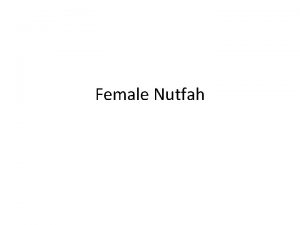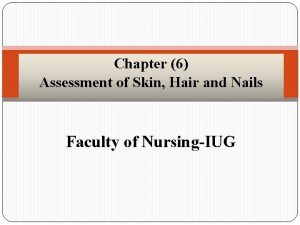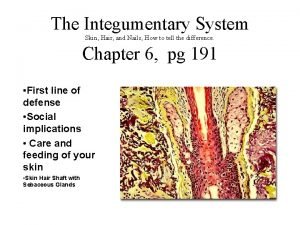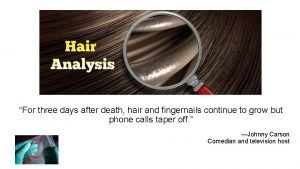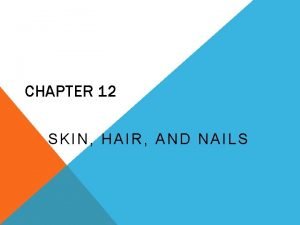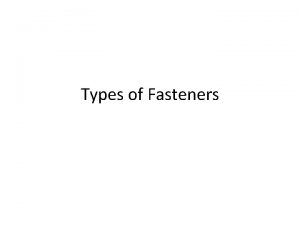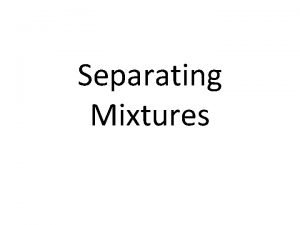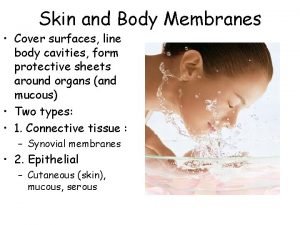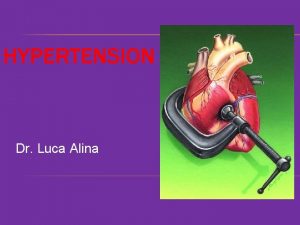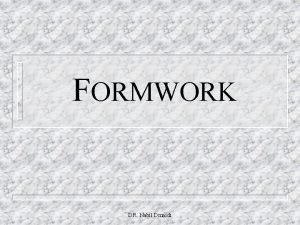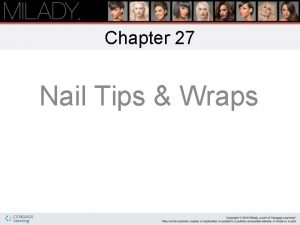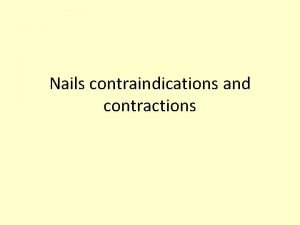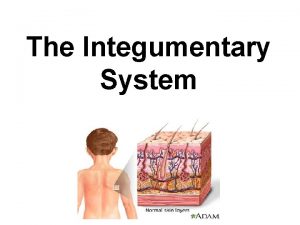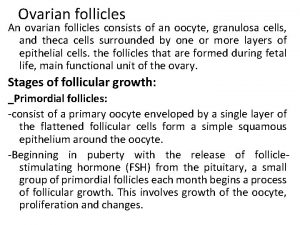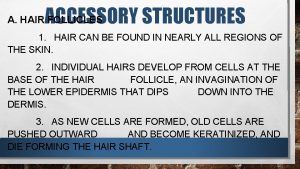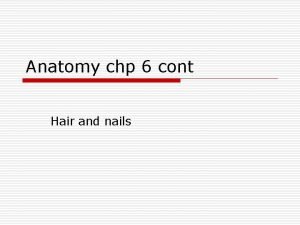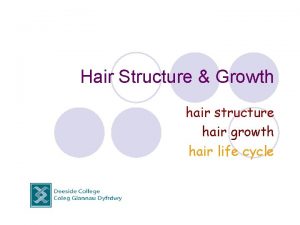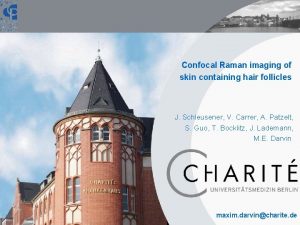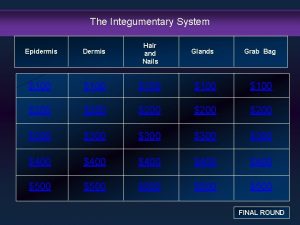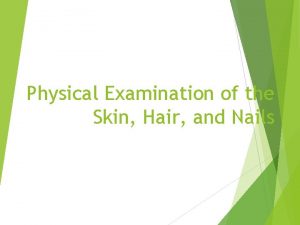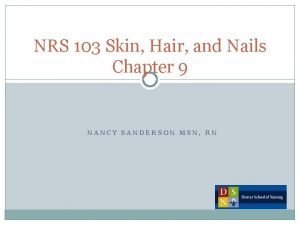Hair and Nails Hair and Hair Follicles Hair

















- Slides: 17

Hair and Nails



Hair and Hair Follicles • Hair is found everywhere EXCEPT for the palms of hands, soles of feet, fingertips, and on the bottom of our toes • Hair is just heavily keratinized cells, that are pigmented and bonded by proteins • Just like with skin tone, color and type of hair is genetically determined • Hairs protect the scalp, prevent heat loss, and have touch receptors that allow us to determine movement

Parts of hair • • • 1. Shaft – Part that we see Straight Hair has rounded shape to the structure of the hair cells Curly Hair will have kidney shaped structure Wavy Hair has oval shaped structure to it 2. Root – Part that is anchored in the dermis Part of hair that is in contact with blood vessels below, live part of a hair

Parts: • Root– The root can be broken into 3 zones and is the part of the hair that pushes into the dermis • 1. Medulla – inner part of a hair (not found in thin hair) this is the part that contains pigment composed of two or three rows of irregularly shaped cells • 2. Cortex – middle part that contains more pigment and provides some body/structure to the hair, consists of elongated cells • 3. Cuticle – outer part of hair that root 1 layer of cells that are thin, flat, and the most heavily keratinized part of a hair • The cuticle cells are arranged like shingles on a house with a free edge pointing toward the end of the hair


Parts • Bulb – base of the hair that receives nourishment • Matrix – germinal layer that is associated with stratum basale • this is where the stem cells for hair are located



Nails • Plates of tightly packed, hard, dead, keratinized epidermal cells that form a clear, solid covering over the ends of our fingers and toes • Each nail consists of a nail body, free edge, and a root



Parts of a Nail • 1. Body – Visible part of the nail that we see/take care of • Comparable to the stratum corneum with the exception that the cells have more keratin and do not shed • The body appears pink because we can see the blood flowing through the capillaries in the dermis below it • 2. Free Edge – part of the nail that may extend past the tip of the finger/toe • Appears different from the body because its not above the dermis and so it loses its pinkish color

Parts: • 3. Nail Root – portion that is buried in a fold of skin • Lunula – white moon shaped part of the nail located near the root • Portion of thickened stratum basale • Since its thicker than the rest of the nail we cannot see blood vessels below and it appears white in color

Accessory Parts: • 1. Hyponychium – thickened region of stratum corneum that secures the nail to the fingertip • 2. Cuticle – narrow band of epidermis that extends from and adheres to boarder of the nail wall • Anchors nail to the finger at its base • 3. Nail Matrix – portion deep to the nail root • Location where cells divide by mitosis to produce new nail • Nails grow about 1 mm per week and longer fingers have nails that grow faster than shorter fingers

 Secondary oocyte and ovum
Secondary oocyte and ovum Secondary oocyte
Secondary oocyte Follicles in ovary
Follicles in ovary Nail contour nursing
Nail contour nursing Sinple columnar
Sinple columnar Interrupted medulla
Interrupted medulla Normal shape and contour of nails
Normal shape and contour of nails Different types of nails and screws
Different types of nails and screws Sieving separation examples
Sieving separation examples Ryan saucier
Ryan saucier Five layer of skin
Five layer of skin Kckcc
Kckcc Icd 10 arf
Icd 10 arf Alina luca
Alina luca St eves ho ho kus
St eves ho ho kus Sfca unit of measure
Sfca unit of measure Nail reshidi
Nail reshidi Leuconychi
Leuconychi

